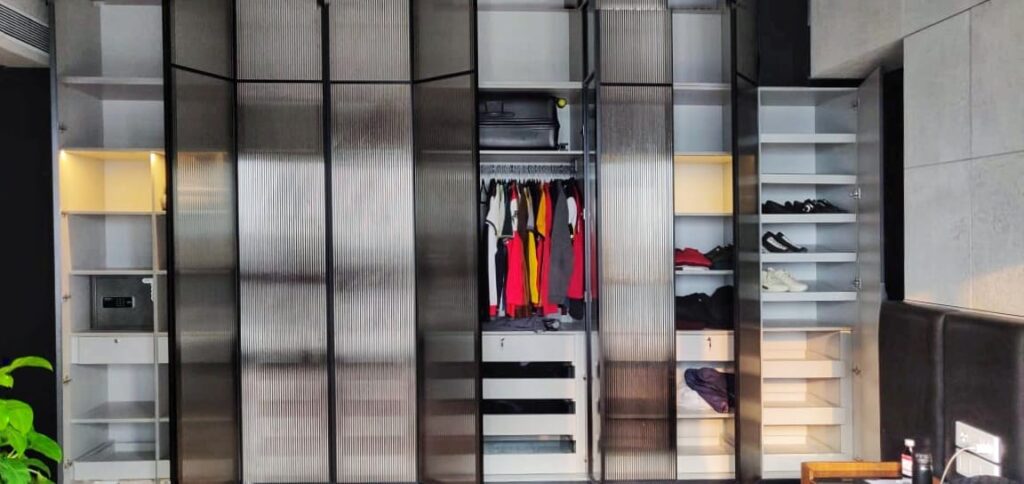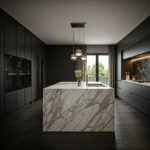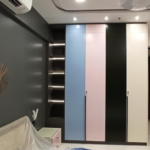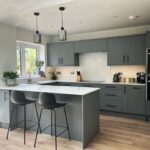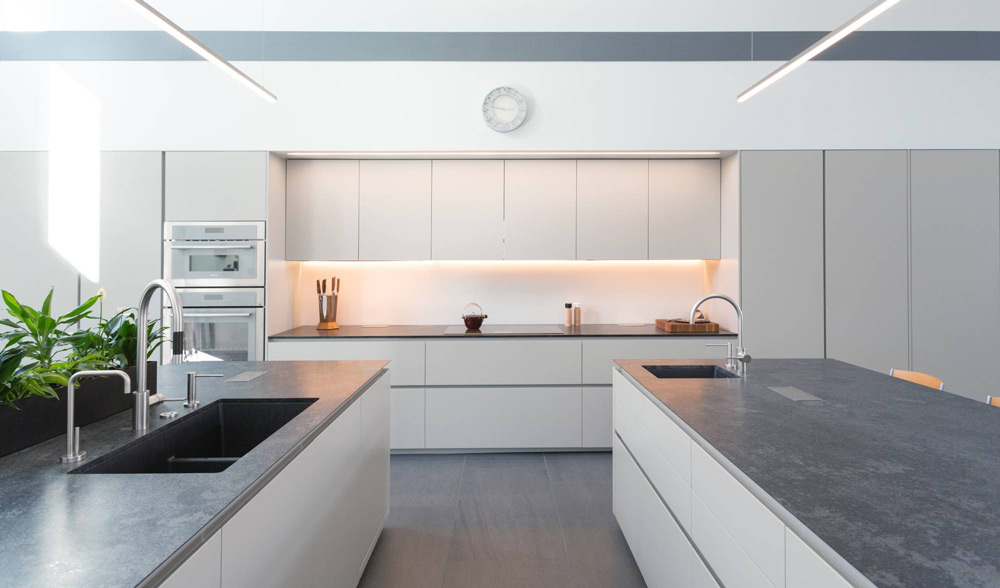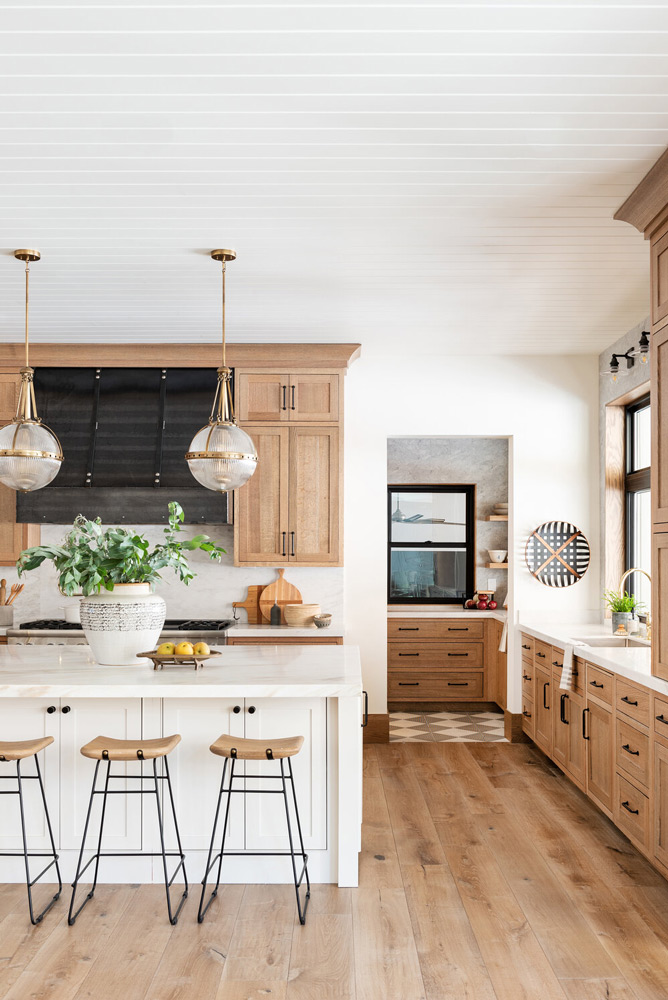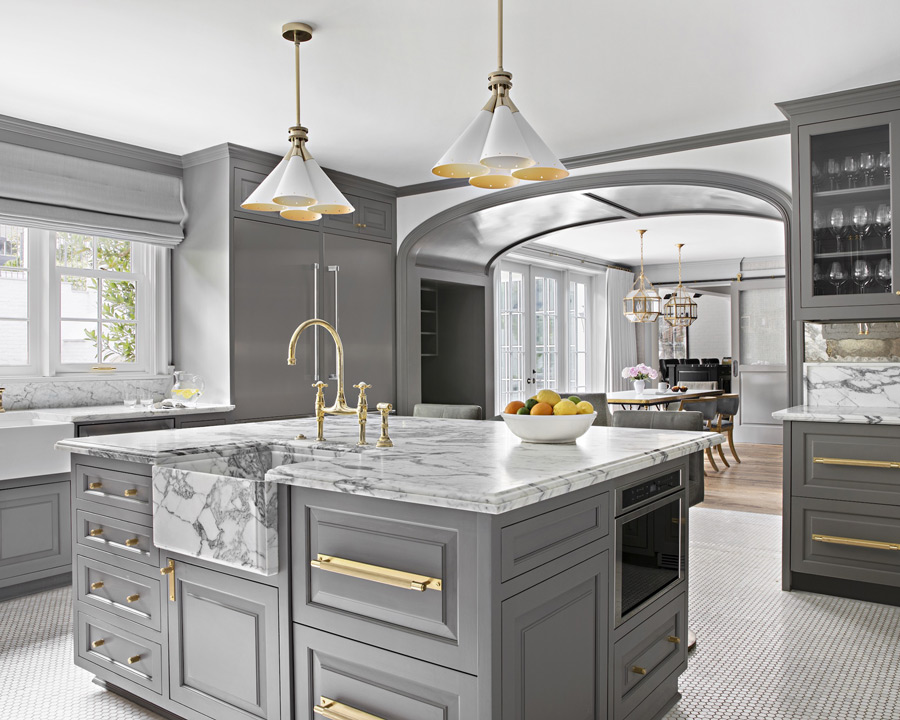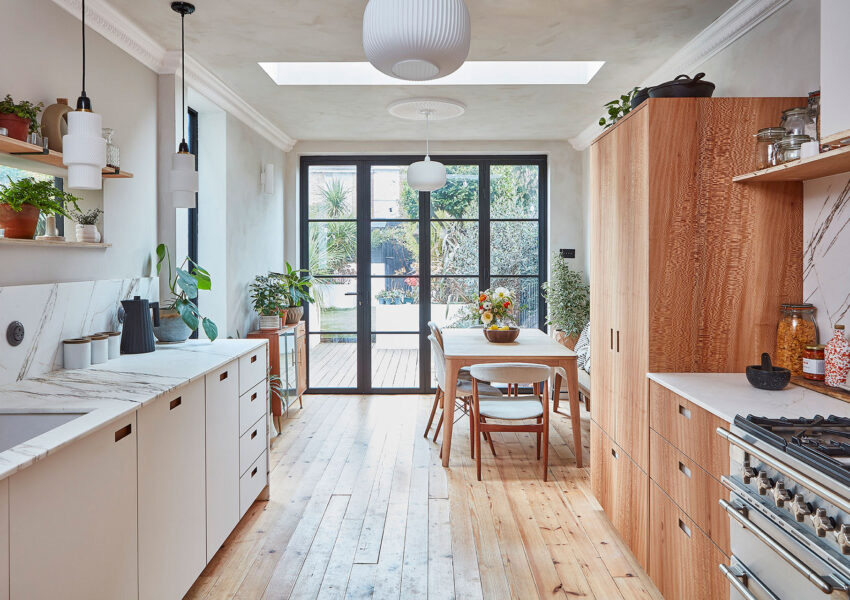When it comes to creating the perfect modular wardrobe, one of the most critical decisions you’ll face is choosing between sliding doors and hinged doors. These two options each offer distinct advantages and challenges, influencing not only the look of your wardrobe but also its functionality and how it fits into your space. This detailed guide will walk you through the differences between sliding and hinged doors, the pros and cons of each, and how to decide which is the right fit for your home.
-
Introduction to Modular Wardrobes
Modular wardrobes have revolutionised the way we think about storage, offering homeowners a flexible and customizable solution that fits seamlessly into their space. With modular wardrobes, you can design and organize the compartments, shelves, and sections according to your specific needs. One of the most important aspects of planning a modular wardrobe is deciding on the type of doors to install. Your decision between sliding doors and hinged doors will affect not just the wardrobe’s aesthetic appeal but also its functionality.
Sliding doors and hinged doors are the two primary styles used in modern modular wardrobes. Each has unique advantages, and the choice largely depends on the space available, your personal style, and practical considerations like ease of use and maintenance.
-
Sliding Wardrobe Doors
Sliding wardrobe doors are a popular choice in contemporary homes, offering a sleek and modern look. These doors operate by gliding horizontally on a track system, which eliminates the need for additional space to swing the door open. As a result, they are perfect for small or confined spaces where every inch of room matters.
Benefits of Sliding Wardrobe Doors
Space-Saving Design: Sliding doors are ideal for rooms with limited space, as they don’t require extra clearance to open. You can place furniture, such as a bed or dresser, close to the wardrobe without worrying about the door clearance.
Sleek and Modern Aesthetic: Sliding doors give your wardrobe a minimalist and contemporary appearance. They can be customised with glass, mirrors, or wood finishes, allowing you to design a wardrobe that complements your overall room decor.
Wide Panels for Better Access: Sliding doors often come in large panels, making it easier to open one section of the wardrobe at a time and access wider portions of your clothes or belongings. This is especially helpful when you have a well-organized wardrobe with multiple zones.
Customisable Materials and Finishes: From frosted glass to mirrored doors, or wooden panels, sliding doors offer a range of material options. Mirrored sliding doors, in particular, are popular because they help reflect light, making the room appear larger while also serving as a functional full-length mirror.
Challenges of Sliding Wardrobe Doors
Limited Access to the Entire Wardrobe: While sliding doors allow you to open wide sections, they limit access to one side of the wardrobe at a time. This can make it difficult to see everything at once, especially if you prefer a full view of your wardrobe.
Track Maintenance: Sliding doors operate on a track system that requires regular maintenance to ensure smooth operation. Dirt, dust, and debris can accumulate in the tracks, leading to sticky or jammed doors over time. Occasional cleaning and maintenance are necessary to keep the doors functioning properly.
Hinged Wardrobe Doors
Hinged doors are the traditional style for wardrobes, where the door is attached to the wardrobe frame with hinges and swings outward when opened. While they may not have the modern appeal of sliding doors, hinged doors offer a range of benefits that make them a practical choice for many homes.
Benefits of Hinged Wardrobe Doors
Full Access to the Wardrobe: Hinged doors allow you to open the entire wardrobe at once, making it easier to access all of your clothing and belongings. This full view can be particularly helpful when organizing or selecting outfits.
Versatility in Design: Hinged doors are highly versatile and can be designed with additional features such as hooks or racks on the inside of the door. This is perfect for organizing small accessories like belts, ties, scarves, or handbags, adding extra functionality to your wardrobe.
Easy Maintenance: Hinged doors are generally easier to maintain than sliding doors because they don’t rely on a track system. The hinges may occasionally need to be tightened, but they are less likely to jam or stick than sliding door tracks.
Challenges of Hinged Wardrobe Doors
Space Requirements: Hinged doors require space to swing open, which means they are not suitable for smaller rooms where space is at a premium. You’ll need to ensure that you have enough clearance in front of the wardrobe to fully open the doors.
Potential for an Outdated Look: While hinged doors can be stylish, they don’t always offer the sleek, modern appearance that sliding doors provide. If you’re aiming for a minimalist or contemporary design, hinged doors may not align with your aesthetic goals.
Multiple Doors for Large Wardrobes: For wider wardrobes, hinged doors are typically narrower, which may require more panels to cover the entire wardrobe. This can lead to a busier appearance compared to the clean, uninterrupted lines of sliding doors.
-
Key Factors to Consider When Choosing Wardrobe Doors
When choosing between sliding and hinged doors, several factors should guide your decision:
Space: Consider how much space you have in your room. Sliding doors are the better choice for smaller rooms, while hinged doors work well in larger spaces.
Style and Aesthetic: Sliding doors offer a modern, streamlined look, while hinged doors provide a more classic or traditional appearance. Your personal design preference will play a significant role in this decision.
Accessibility: Do you need full access to your wardrobe at once, or is partial access sufficient? Hinged doors provide full access, while sliding doors limit you to one side at a time.
Which Style is Right for You?
Choosing between sliding and hinged wardrobe doors ultimately depends on your personal preferences, space requirements, and budget. Here are some recommendations based on common needs:
If you have a small or narrow room, sliding doors are your best bet. They save space and create a modern, clean look that doesn’t require extra clearance.
If you want full access to your wardrobe: hinged doors provide the benefit of opening the entire wardrobe at once, making it easier to view and organise your clothes and accessories.
If you prefer a contemporary design: sliding doors, especially those with mirrored or glass panels, will give your wardrobe a sleek and sophisticated feel.
If you’re on a budget, hinged doors are generally more affordable and easier to install, making them the practical choice for cost-conscious homeowners.
If you need low-maintenance: Hinged doors require less maintenance than sliding doors, which can sometimes become problematic due to track issues.
Conclusion
Both sliding and hinged doors offer distinct advantages when it comes to modular wardrobes. Sliding doors are perfect for homeowners looking for a space-saving, modern solution, while hinged doors provide easy access and a more traditional look. By considering the space available, your personal style, and your budget, you can make an informed decision on the best wardrobe door style for your home.
